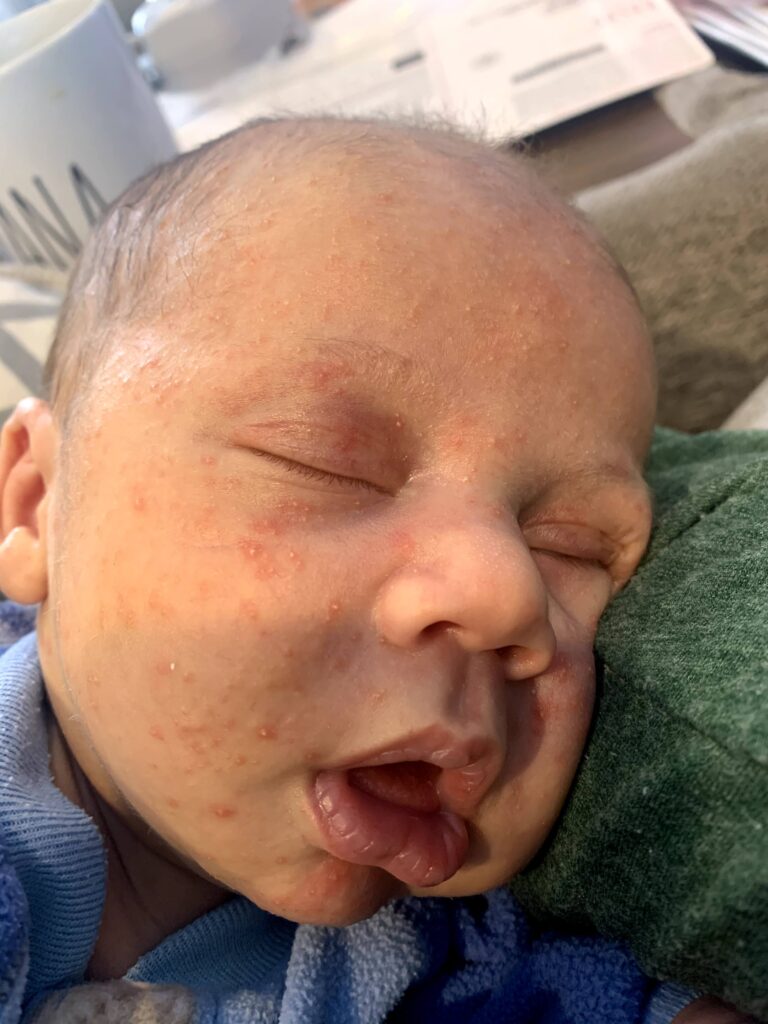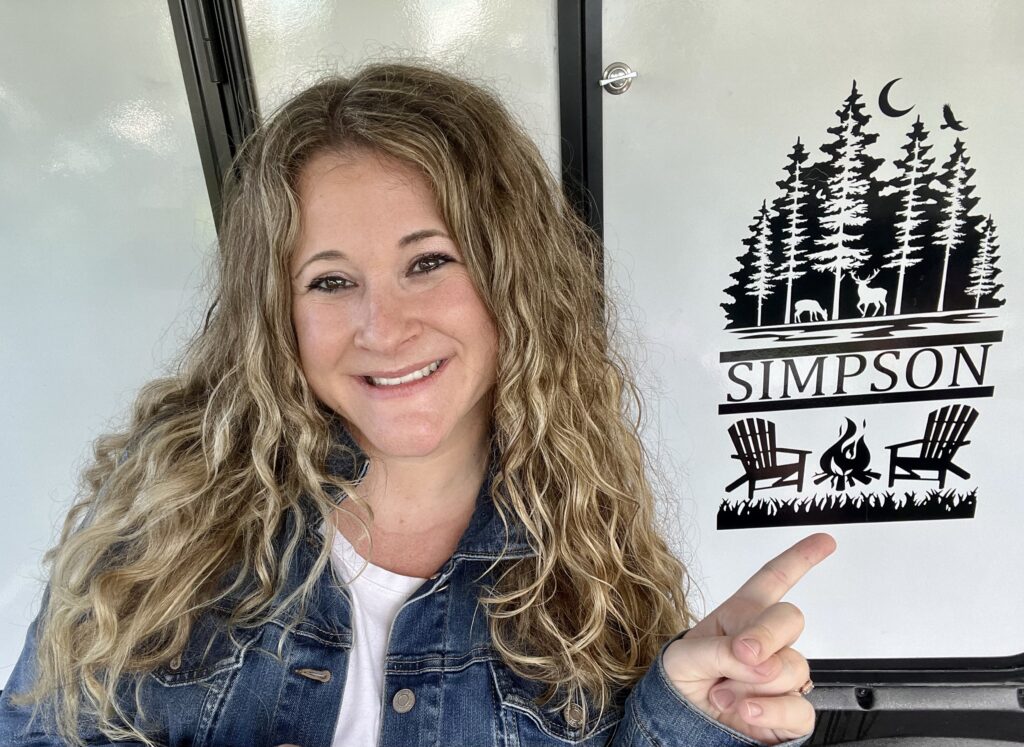As a mother of three children, all of whom were diagnosed with tongue and lip ties, I understand the frustration and confusion that comes with trying to determine if your baby has these conditions. It can be a challenging process, but it’s crucial to identify and treat tongue and lip ties early to avoid breastfeeding difficulties, speech problems, and other issues that may arise later on. You can see the havoc that tongue ties and food allergies had on my poor little babe in this cover photo. See his skin? And the way that he is sleeping with his mouth open? These are tell-tale signs. So, how do you go about identifying a tongue and lip tie, and how do you know if your young child has them? Let me help you with my #momblog – ness so that you don’t have to go through all the trouble googling these details. Here is the high level, all in one place.
A tongue tie, also known as ankyloglossia, is a condition in which the lingual frenulum (the band of tissue that connects the tongue to the floor of the mouth) is abnormally tight, short, or thick. Lip tie, on the other hand, is when the labial frenulum (the tissue that connects the upper lip to the gums) is too restrictive or tight. These conditions can cause difficulties with breastfeeding, speech, and even dental hygiene. All of my children had both. Fun! This is very common. And, most of the time, the lip tie can be the most identifiable. 9/10 if your child has a lip tie, they also have a tongue or even buccal ties. Identifying a tongue and lip tie does not have to be hard.
If you suspect your young child may have a tongue and lip tie, there are a few signs to look for. Here are some of the most common indicators:
- Difficulty latching or staying latched during breastfeeding
- Poor weight gain or slow growth
- Clicking sounds while nursing
- Not closing mouth when sleeping/at rest
- Painful or uncomfortable breastfeeding
- Gassiness or reflux
- Colic or fussy behavior
- Inadequate milk transfer
- Nipple pain or damage
- Speech issues (in older children)
- Large gap between two top front teeth
- Consistent nasal congestion
- Trouble sleeping
If you notice any of these symptoms, it’s essential to talk to your pediatrician or a lactation consultant. They can help you determine if your baby has a tongue and lip tie and, if so, provide guidance on what to do next. I will say, Pediatrician’s are getting better, but have not been great for this support in my experience. I found much more knowledge base, support, and planning help from the following health professionals: Pediatric Dentist, ENT (some- make sure trained in children), trained Chiropractor, Speech and Feeding Therapists, etc.
- The first step after identifying a tongue and lip tie is to have a physical exam by a trained professional and gain a formal diagnosis. Lactation consultants, pediatric dentists, and pediatricians can all evaluate your young child’s mouth and determine if there is an abnormality with the frenulum. Some practitioners may use a “finger sweep” to assess the tongue’s mobility or use a small, sterile ruler to measure the distance from the frenulum to the tongue’s tip.
- In some cases, your child may need further evaluation, such as a referral to an ear, nose, and throat (ENT) specialist or a speech pathologist. They may perform additional tests, such as a swallow study or a frenectomy (a procedure to release the frenulum), if necessary.
- It’s important to note that not all infants with tongue or lip tie require treatment. Some babies can compensate for the restriction and breastfeed successfully without any issues. However, this doesn’t mean that there won’t be issues later on if you leave it untreated. If your baby or young child is experiencing difficulties, it’s crucial to seek treatment sooner rather than later. The longer you wait, the more challenging it can be to address the problem. We have seen this first hand with our daughter who is now approaching 7. She did not have the release procedure (but she will be having it soon) due to lack of knowledge of this during her infancy, even though all of the signs were there. We are now dealing with sleep apnea, breathing, chewing, and swallowing issues that are being supported by a pediatric orthodontist, myofunctional therapist, feeding specialist, and ENT. So much of this would have been preventable if we had these things treated when she was a baby.
In addition to seeking medical attention, there are several things you can do to support your baby or child if they have tongue and lip tie. Here are a few tips to keep in mind:
- Use proper positioning and latch techniques during breastfeeding. A lactation consultant can help you with this.
- Offer frequent feeding sessions to ensure your baby is getting enough milk.
- Consider using a nipple shield to help your baby latch more easily.
- Pump after feedings to increase milk production and avoid engorgement.
- Talk to a speech therapist or occupational therapist if you notice speech or feeding difficulties in older children.
- Consult with a licensed and trained Chiropractor, who specializes in pediatric chiropractor work in children with tethered oral issues, this will be for before, during and after treatment.
- Work with a licensed speech therapist to go over feeding techniques, stretches and more so you are prepared for procedure and your child learns to eat and speak in a supportive environment
Also know that there is a huge support community around these procedures. The actual procedure itself, after your consult, is about 5 minutes. It is a laser-based treatment and your child is separated from you for what feels like hours, even though it truly is five minutes. They need mild pain support afterwards, like ice or children’s Tylenol. Our doctor even recommended Arnica instead of Tylenol and gave us the specific dosages. The most important part is following up with the before and after care. We saw a chiropractor and a lactation consultant for six weeks post-op, on top of doing the stretches each day, multiple times per day. I kid you not – my second son had the procedure done at 7 months old when I discovered lip and tongue ties and he went from painful breastfeeding, over supply for me, gas, and choking while trying to eat baby foods, to immediate changes in 24 hours. He could latch easier, and could eat
At the end of the day, the most crucial step in addressing a tongue and lip tie is to seek a professional diagnosis. Don’t be afraid to speak up if you suspect your baby is struggling with breastfeeding or experiencing other issues. The earlier you can identify and treat these conditions, the better chance you have of avoiding long-term complications. Advocate, Advocate, Advocate! You are the expert in your child and you know when things are off. Trust your instincts and seek out the professionals that you know will support you.
If you want to learn more about managing feeding issues, you can check out our course here.
If you like what you’re reading, make sure to subscribe to the blog!
Follow us on Instagram & Pinterest here for more content like this!










